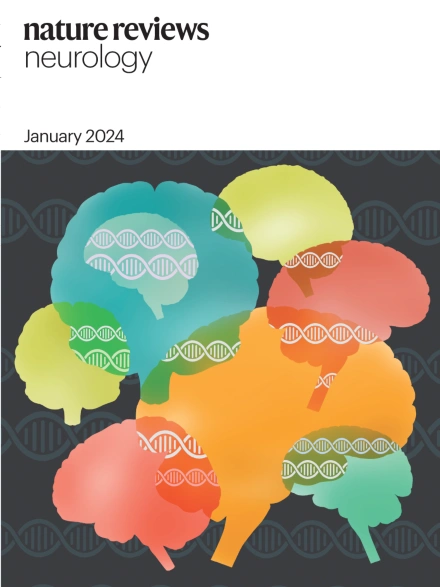Coeliac disease as a model for understanding multiple sclerosis
IF 28.2
1区 医学
Q1 CLINICAL NEUROLOGY
引用次数: 0
Abstract
The genetic architecture of multiple sclerosis (MS) is similar to that of coeliac disease, with human leukocyte antigen (HLA) being the greatest genetic determinant in both diseases. Furthermore, similar to the involvement of gluten in coeliac disease, Epstein–Barr virus (EBV) infection is now widely considered to be an important environmental factor in MS. The molecular basis for the HLA association in coeliac disease is well defined, and B cells have a clear role in antigen presentation to gluten-specific CD4+ T cells. By contrast, the mechanisms underlying the HLA association of MS are unknown but accumulating evidence indicates a similar role of B cells acting as antigen-presenting cells. The growing parallels suggest that much could be learned about the mechanisms of MS by using coeliac disease as a model. In this Perspective article, we discuss the insights that could be gained from these parallels and consider the possibility of antiviral treatment against EBV as a therapy for MS that is analogous to the gluten-free diet in coeliac disease. In this Perspective, the authors discuss how our understanding of coeliac disease could provide insights into the mechanisms of multiple sclerosis, the involvement of Epstein–Barr virus and the possibility of antiviral treatment against the virus as a therapy for multiple sclerosis.


将乳糜泻作为理解多发性硬化症的模型
多发性硬化症(MS)的遗传结构与乳糜泻相似,人类白细胞抗原(HLA)是这两种疾病的最大遗传决定因素。此外,与麸质蛋白在乳糜泻中的作用类似,爱泼斯坦-巴氏病毒(EBV)感染现在也被广泛认为是多发性硬化症的一个重要环境因素。乳糜泻中 HLA 相关性的分子基础已经明确,B 细胞在向麸质特异性 CD4+ T 细胞呈递抗原方面发挥着明确的作用。相比之下,多发性硬化症的 HLA 关联机制尚不清楚,但越来越多的证据表明,B 细胞作为抗原递呈细胞也发挥着类似的作用。越来越多的相似之处表明,将乳糜泻作为一个模型,可以从多发性硬化症的发病机制中学到很多东西。在这篇 "视角 "文章中,我们将讨论从这些相似之处中获得的启示,并考虑将针对 EBV 的抗病毒治疗作为一种治疗多发性硬化症的方法的可能性,这种方法类似于治疗乳糜泻的无麸质饮食。
本文章由计算机程序翻译,如有差异,请以英文原文为准。
求助全文
约1分钟内获得全文
求助全文
来源期刊

Nature Reviews Neurology
医学-临床神经学
CiteScore
29.90
自引率
0.80%
发文量
138
审稿时长
6-12 weeks
期刊介绍:
Nature Reviews Neurology aims to be the premier source of reviews and commentaries for the scientific and clinical communities we serve. We want to provide an unparalleled service to authors, referees, and readers, and we work hard to maximize the usefulness and impact of each article. The journal publishes Research Highlights, Comments, News & Views, Reviews, Consensus Statements, and Perspectives relevant to researchers and clinicians working in the field of neurology. Our broad scope ensures that the work we publish reaches the widest possible audience. Our articles are authoritative, accessible, and enhanced with clearly understandable figures, tables, and other display items. This page gives more detail about the aims and scope of the journal.
 求助内容:
求助内容: 应助结果提醒方式:
应助结果提醒方式:


